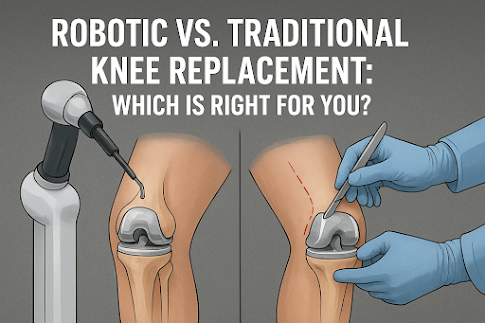Robotic vs. Traditional Knee Replacement: Which Is Right for You?
Knee replacement surgery has advanced significantly in recent years. With the rise of robotic-assisted technology, patients now have more options than ever before. But how do you decide between robotic knee replacement and traditional knee replacement? Let’s explore the differences, benefits, and what you should know before making a decision.
What Is Traditional Knee Replacement?
Traditional knee replacement surgery involves the surgeon manually guiding instruments to remove damaged cartilage and bone. A prosthetic implant is then positioned by hand. This procedure has been performed for decades and has a high success rate.
Advantages of traditional surgery
- Proven long-term results
- Widely available across hospitals
- Cost-effective compared to newer techniques
Limitations
- Relies heavily on surgeon’s hand precision
- Slight variations in implant positioning possible
- Longer recovery period in some cases
What Is Robotic Knee Replacement?
Robotic knee replacement uses advanced computer-assisted systems to help surgeons plan and perform the procedure with high accuracy. The robotic arm doesn’t replace the surgeon but enhances precision in bone cuts and implant placement.
Advantages of robotic-assisted surgery:
- Improved implant alignment and balance
- Smaller incisions with less tissue damage
- Faster recovery and rehabilitation
- Personalized surgical planning with 3D imaging
Limitations:
- Higher cost than conventional procedures
- Availability limited to advanced centers
- Learning curve for surgeons adapting to technology
Robotic vs. Traditional: Key Differences
| Feature | Robotic Knee Surgery | Traditional Knee Surgery |
| Accuracy | High precision with robotic arm | Dependent on surgeon’s skill |
| Recovery | Generally faster | May take longer |
| Cost | Higher | Relatively lower |
| Technology | Computer-assisted 3D planning | Manual alignment |
| Availability | Specialized hospitals | Widely available |

